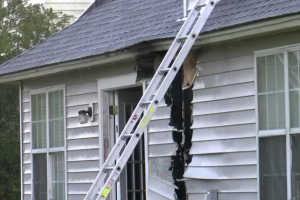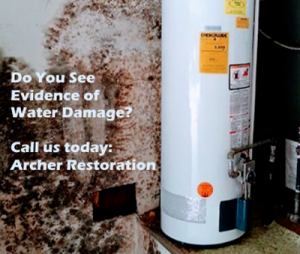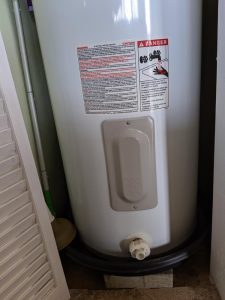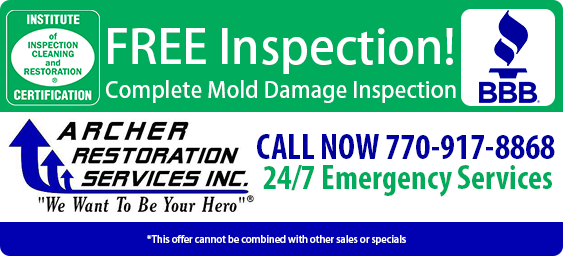Category Archives: tips
Bio-Hazard & Trauma Clean Up Services
Archer Restoration Services wants you to know that we are here, 24 x 7 days per week! We are ready to help you at your home or workplace with any mitigation, remediation, or restoration needs during the COVID-19 pandemic.
Archer Restoration Services has been actively helping our customers with hazardous material clean up services for many years.
Some examples of the services we provide are:
• Mold remediation
• Black water and sewage clean up
• Asbestos clean up
• Lead abatement
• Bio-hazard and trauma clean up.
We have the expertise and practical knowledge to complete all necessary work while keeping everyone safe through these trying times.
We have trained our technicians to implement CDC guidelines, and added additional safety disinfection procedures to help minimize the spread of germs.
If we can be of any service at your home or office, or answer any of your concerns, please reach out to Archer Restoration Services. We want to be your hero!
What to do if you see mold damage in the bathroom or kitchen area of your home
If you are a homeowner, then you know that you typically find mold growing in the dark, wet places of your home. Mold loves damp basements that have dark corners where it can hide from the light and ventilation. Mold also loves to grow in moisture-filled environments like bathrooms and kitchens. Mold can be hard to get rid of in these places, especially it there is hidden damage or water leaks beyond what you can see (like behind the wall).
Black mold is an extreme example of a mold problem, and it is toxic. While not all mold types are toxic, it is important to have them addressed by a professional mold remediation team to keep the problem from getting worse!
Many bathrooms will have signs of mold, so it is important to know what the signs of mold damage look like, and what is just on the surface.
Common Signs of Mold and what Causes Mold Growth:
1. Humidity from hot showers is a common cause of bathroom mold, but you have to be sure water and mold is not getting behind the walls or behind the plumbing. A professional remediation company will be able to tell if there is a problem, with moisture reading devices or cameras.
2. Leaky showers and faucets. Mold likes water leaks. It provides a good way for mold to grow. Tubs, sinks, showers… they are all susceptible to mold problems, especially if there is a leak. A remediation team (Like Archer Restoration) will inspect the source of the leak to remedy the whole problem and restore it.
3. Tub/Shower walls or tile grout lines. With a steady source of water to feed the mold, and a nice steamy environment to make it comfortable, mold finds a surface to grow on, in many bathrooms. If you see that a corner or section of the shower seems to get mold build up quickly, call our team to check for mold behind the walls.
4. Lack of ventilation. Be sure to use the vent in your bathroom when you shower. If you don’t use it, then the moisture from the water sits in the air and attaches itself to the walls or ceiling. Be sure that the fan in the ceiling is working and use it every time you shower.
If you aren’t sure how to tell if you have mold or water leaks, call us for Water and Mold Remediation Services! We will check your home thoroughly for water damage and mold damages.
Contact Archer Restoration Services today for water damage clean up and remediation services.
How to Keep Your Water Pipes from Freezing in the Winter
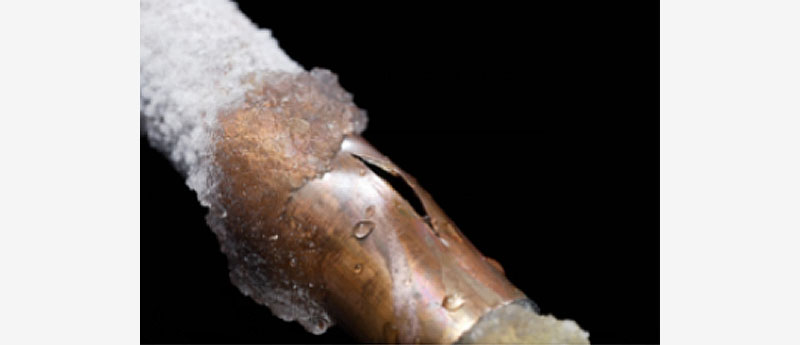
Did you know that freezing temperatures can cause water pipes to freeze and burst? Freezing water in a pipe creates a lot of pressure inside of it, and this can lead to flooding!
We have seen many basement floods from busted water pipes, as well as and kitchens and bathroom floors get soaked, from water pipes that froze and then exploded from the pressure that built up.
The best prevention against frozen pipes is to keep them warm enough to stay above the freezing point.
Here are a few questions that our clients asked us about freezing water pipes, that we wanted to share with you, as well as a few tips on how to avoid freezing water pipes.
Q: “We live in Georgia, and freezing isn’t that common, here. We thought our water pipes wouldn’t freeze here. How did this happen?”
A: Homes in warmer climates may be more vulnerable to freezing over, because those water pipes may not be properly insulated against freezing temperatures. Even in Georgia, pipes can certainly freeze and cause a house flood! Older homes may be more prone to have brittle pipes, so when a freeze happens, older pipes may not be able to withstand the freezing temperatures.
Q: “There are a lot of water pipes running through the house, Which ones are at risk of freezing?
A: The only ones of concern are the water supply pipes (not the drain pipes). Water pipes are small, only about 1 inch in diameter or smaller. Drain pipes are 1.5 inches larger and are usually made of plastic. Drain pipes carry waste water and are not pressurized like water pipes, so freezing inside drain pipes is unlikely.
Q: “How can I keep the water pipes from freezing at my home?”
A: Here are a few tips to help avoid freezing water pipes:
1. Keep your heat on inside the home
Keep the Heat on in the home, so that the temperature inside is warm. This will help prevent freezing in the pipes that are close to the house or under the house.
2. Allow the Faucet to Drip
Turn on the faucet just a small amount, so that the faucet drips slightly. Allowing the faucet to be open like this relieves pressure in the system. If a pipe freezes, it is attributed to the pressure that builds inside, that causes the pipe to burst. Allowing the faucet to drip releases the pressure from building up.
3. Seal up Cracks and Holes
Seal gaps around holes where pipes run through walls or floors, especially where the hole is letting in cold air. Use caulk or spray foam insulation to fill the gaps. This will help you save money on heating bills, too.
4. Add Extra Insulation
Pipes that are located in area like basements or attics, may need extra insulation to keep from freezing. Pipes can be fitted with foam rubber or fiberglass sleeves to help decrease the chances of freezing.
Facts About Lighting that You Should Know
Did you now that: Lightning strikes in 2015 cost $790 million in insured losses? (According to the Insurance Information Institute).
Lightning is not always taken seriously, but it should be. It’s an occasional safety risk, but it can be a serious life-threating disaster. Here are some facts that prove just how dangerous it can be.
1. During a thunderstorm, lightning can strike up to 10 miles away from the area of rainfall.
2. Lightning causes an average of 55-60 fatalities yearly.
How Hot Is a Lighting Strike: The air surrounded by a lightning strike can be as hot as 50,000 degrees Fahrenheit. (That’s even hotter than the sun!) A single strike of lightning can be up to 100 million volts of electricity.
What State Sees the Most Lightning: Florida and other Gulf Coast states see the most lightning, however, the whole U.S. experiences about 25 million flashes of lightning spread throughout the country.
How to Stay Safe in a Lighting Storm: During a lightning storm, the inside of your home or office is the safest place to be, but you still must be aware of things that can carry a shock or a current. Don’t touch anything that can conduct electricity, such as:
· Wired phone lines
· Metal surfaces, such as an outside door
· Anything connected to water lines (plumbing system)
· Anything served by gas lines: gas water heaters, ovens, furnaces or fireplaces
How fast can lighting travel? Lightning travels at 220,000,000 miles per hour. By the time you see it strike something near you, it’s gone. Something to remember, is that light travels faster than sound, so the audible area of the strike zone can be deceiving.
How fast does the sound of thunder travel? The sound of thunder only travels 750 miles per hour. That’s a big difference! Thunder isn’t always a good indicator of the area of potential danger from a lighting strike. When you know that lighting is nearby, take cover indoors. Don’t wait for the thunder to get louder (or closer to you) before you go indoors.
Common areas of the home that can be damaged by heavy storms and lighting: After a damaging storm, inspect the roof and attic areas. Then check utility rooms to see that there isn’t a problem with water, gas, or electrical system components.
Install surge protection devices as a precaution. Lightning strikes on a nearby power line are a frequent cause of power surges. Using surge protectors, combined with a good grounding system should help protect from most electrical surges. (Note: Surge protectors do not suppress a surge; it only diverts the surge to the ground.
When lighting is in the area, take it seriously and take cover immediately. If you know someone whose home has been impacted by a thunderstorm or lighting, call Archer Restoration Services. We give estimate on home restoration projects. If you home can be restored, we work with your insurance company to make it like new. Archer Restoration Services wants to be your hero!
The Facts About Mold in Your Home
Oh no! You saw mold on the ceiling, under the bathroom upstairs. What do you do now?
Here’s what you need to know about mold you find in your house…
Yes, it’s ugly.
Yes, it can be dangerous.
And, it’s hard to get rid of by yourself. You may need a professional to evaluate the problem and offer a solution.
Once mold infests your home or business, it will spread and continue to grow until the problem is professionally taken care of. Mold spores can enter your home in many ways and will grow in places with a lot of moisture. If a structure has been damaged because of water, whether it’s a plumbing issue or more severe flooding, mold is likely to begin growing.
If you are wondering which mold is bad to have growing in your house the answer is simple: It’s all bad. If not immediately dealt with, mold can pose serious health risks to you and your family. Symptoms may include:
· Sore Throat
· Coughing
· Sneezing
· Respiratory problems
· Asthma attacks
Reactions to mold vary from person to person. Symptoms may be minor in relatively healthy people, but there are very real dangers to those who are susceptible to mold. In 2004, the Institute of Medicine linked indoor exposure to mold with upper respiratory symptoms. Mold exposure was also linked to respiratory illness in otherwise healthy children.
Although there are a slew of products on the shelves of your favorite hardware store that tout mold removing magic, the truth is unless a professional is called, the problem isn’t going to go away. Archer Restoration Services, Inc. has decades of experienced in the area dealing with mold remediation, water removal and mold restoration.
Archer Restoration Inc. is truly a one-stop shop for all mold related troubles. Taking care of a mold problem has several steps. It’s much more involved than just spraying the mold and calling it a day. If mold is growing indoors, due to extensive water damage, that damage needs to be killed and dried out to keep the mold from coming back. That includes removing any lingering dampness behind walls and inside the ceilings, etc.
Whether it’s putting in new drywall or removing and replacing part of the existing structure, we will see the project through from beginning to end. Our customers don’t have to worry about calling contractors or other companies to finish the job or do part of the work, because the Archer Restoration team does it all!
· We remove the existing mold
· Address hidden infestations so the mold stays away
· We remove, remediate and restore
Mold isn’t something to be taken lightly. Nor is it something you should attempt to clean up on your own, especially if it’s because of significant water damage. If you have experienced water damage but haven’t seen signs of mold, our technicians can clean up the damage before mold ever has a chance to appear. If there are already signs of mold growing, don’t wait to call so we can get to work protecting your home and family.
Homeowner Tip: Check the Age of Your Water Heater
We get a lot of calls for busted water heaters and water heater leaks. But, as homeowners, we can all be proactive and check on them before they break. We can easily look for signs of age, and possibly catch them before they bust and leak all over our hardwood floors, or flood our basement,
In this photo, shown here, you can see a water heater “catch pan” (see the black bowl at the bottom). We see these often in homes. By the time we see these, they are full of water and over-flowing.
These “catch pans” are only meant to catch small leaks. No catch pan is large enough to hold up to 30-50 gallons of water, like your water heater probably holds.
What to do: Keep an eye on the age of your water heater (see the sticker for the age) If it’s over 10 years old, check in monthly. They typically don’t last more than 12 years. A water heater that won’t stay lit or leaks is your sign that it is time to replace it. Waiting too long could cause a water flood in your home or basement. Replace them before they break, or call Archer Restoration if you need help cleaning up a water leak or busted water pipes in your home.



